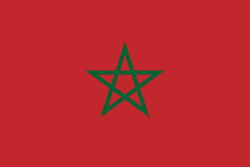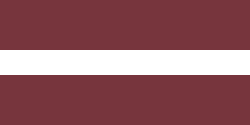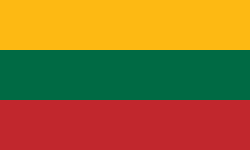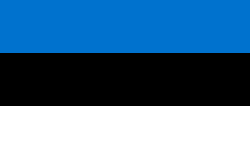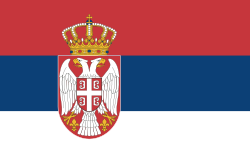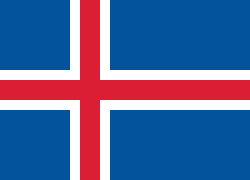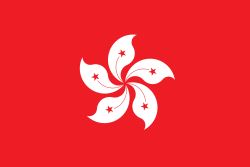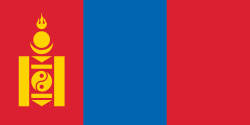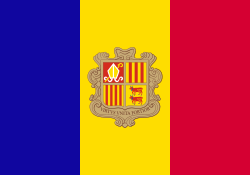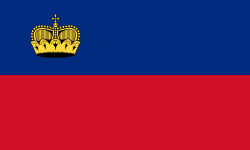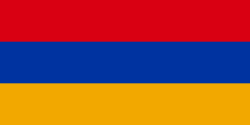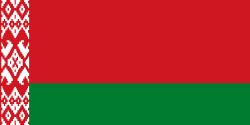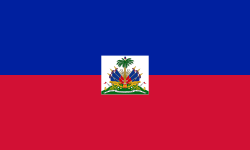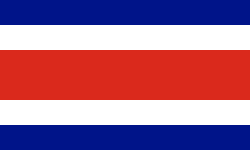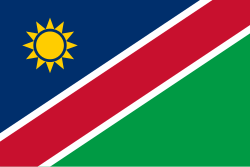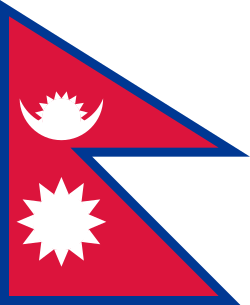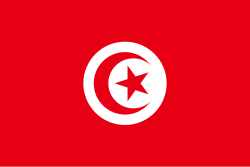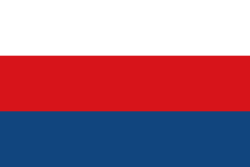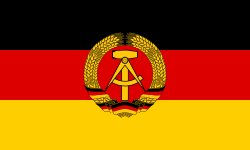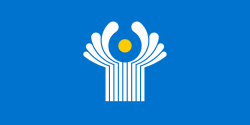Alžírská hokejová reprezentace
| Asociace | Association Algérienne de Ice et Inline Hockey |
|---|---|
| První zápas | |
(16. červen 2008 v Abú Dhabí, SAE) | |
| Nejvyšší prohra | |
(16. červen 2008 v Abú Dhabí, SAE) (19. červen 2008 v Abú Dhabí, SAE) | |
Alžírská hokejová reprezentace je národní hokejové mužstvo Alžírska. Poprvé se sešlo v roce 2006, kdy bylo složené z hráčů alžírského původu, většinou narozených ve Francii a působících v Evropě. Prvním turnajem, kterého se aktivně účastnila, byl Arab Cup v roce 2008. V konkurenci Maroka, Kuvajtu a SAE skončilo poslední. Alžírský reprezentant Harond Litim hrající ve Francii byl vyhlášen nejužitečnějším hráčem turnaje.
Alžírsko je přidružený člen IIHF od 26. září 2019 Mezinárodní federace ledního hokeje (IIHF). Nemůže se proto účastnit mistrovství světa ani zimních olympijských her. V posledních letech bylo učiněno několik kroků k vzestupu alžírského hokeje – byla založena Asociace ledního a in-line hokeje (Association Algérienne de Ice et Inline Hockey) a v roce 2010 ve městě Tizi Ouzou otevřen první zimní stadion v zemi. Svými rozměry sice nesplňuje kritéria IIHF, jde ale o důležitý krok jak otevřít přístup mládeže k hokeji. Dalším krokem má být vybudování stadiónu oficiálních rozměrů a založení společné ligy s Marokem a Tuniskem.[1] Jednou z postav, která podporuje růst alžírského hokeje je bývalý hráč týmů National Hockey League Tampa Bay Lightning, New Jersey Devils a Washington Capitals Josef Boumedienne, který je alžírského původu.
Mezistátní utkání Alžírska
16.06.2008 ![]() Kuvajt 8:2 Alžírsko
Kuvajt 8:2 Alžírsko ![]()
17.06.2008 ![]() SAE 6:2 Alžírsko
SAE 6:2 Alžírsko ![]()
18.06.2008 ![]() Maroko 9:6 Alžírsko
Maroko 9:6 Alžírsko ![]()
19.06.2008 ![]() SAE 10:4 Alžírsko
SAE 10:4 Alžírsko ![]()
20.06.2008 ![]() Maroko 7:5 Alžírsko
Maroko 7:5 Alžírsko ![]()
17.09.2017 ![]() Maroko 9:2 Alžírsko
Maroko 9:2 Alžírsko ![]()
20.09.2017 ![]() Maroko 1:2 Alžírsko
Maroko 1:2 Alžírsko ![]()
22.09.2017 ![]() Libanon 10:3 Alžírsko
Libanon 10:3 Alžírsko ![]()
Reference
- ↑ Historie Archivováno 16. 7. 2011 na Wayback Machine. na hockeyalgeria.com
Externí odkazy
Média použitá na této stránce
Vlajka České republiky. Podoba státní vlajky České republiky je definována zákonem České národní rady č. 3/1993 Sb., o státních symbolech České republiky, přijatým 17. prosince 1992 a který nabyl účinnosti 1. ledna 1993, kdy rozdělením České a Slovenské Federativní republiky vznikla samostatná Česká republika. Vlajka je popsána v § 4 takto: „Státní vlajka České republiky se skládá z horního pruhu bílého a dolního pruhu červeného, mezi něž je vsunut žerďový modrý klín do poloviny délky vlajky. Poměr šířky k její délce je 2 : 3.“
Finská vlajka
Flag of Canada introduced in 1965, using Pantone colors. This design replaced the Canadian Red Ensign design.
Flag of Australia, when congruence with this colour chart is required (i.e. when a "less bright" version is needed).
See Flag of Australia.svg for main file information.Georgian flag in Pantone MS.
The Flag of Iceland.
- Horizontal aspect ratio: 7:1:2:1:14;
- Vertical aspect ratio: 7:1:2:1:7.
This is the national flag of Belgium, according to the Official Guide to Belgian Protocol. It has a 13:15 aspect ratio, though it is rarely seen in this ratio.
Its colours are defined as Pantone black, Pantone yellow 115, and Pantone red 032; also given as CMYK 0,0,0,100; 0,8.5,79,0; and 0,94,87,0.Used color: National flag | South African Government and Pantone Color Picker
| zelená | rendered as RGB 0 119 73 | Pantone 3415 C |
| žlutá | rendered as RGB 255 184 28 | Pantone 1235 C |
| červená | rendered as RGB 224 60 49 | Pantone 179 C |
| modrá | rendered as RGB 0 20 137 | Pantone Reflex Blue C |
| bílá | rendered as RGB 255 255 255 | |
| černá | rendered as RGB 0 0 0 |
The national flag of Kingdom of Thailand; there are total of 3 colours:
- Red represents the blood spilt to protect Thailand’s independence and often more simply described as representing the nation.
- White represents the religion of Buddhism, the predominant religion of the nation
- Blue represents the monarchy of the nation, which is recognised as the centre of Thai hearts.
Chinese Taipei Olympic Flag. According to the official website of Chinese Taipei Olympic Committee, Blue Sky(circle) & White Sun(triangles) above the Olympic rings is neither the National Emblem of the Republic of China, nor the Party Emblem of Kuomintang (KMT), but a design in between, where the triangles do not extend to the edge of the blue circle, as registered at International Olympic Committee in 1981 and digitally rendered in 2013. Besides, the blue outline of the five-petaled plum blossom is broader than the red one. Moreover, the CMYK code of the blue one and the Blue Sky & White Sun is "C100-M100-Y0-K0", and different from the Olympic rings (C100-M25-Y0-K0). Note that it's the only version recognized by IOC.
Flag of Iran. The tricolor flag was introduced in 1906, but after the Islamic Revolution of 1979 the Arabic words 'Allahu akbar' ('God is great'), written in the Kufic script of the Qur'an and repeated 22 times, were added to the red and green strips where they border the white central strip and in the middle is the emblem of Iran (which is a stylized Persian alphabet of the Arabic word Allah ("God")).
The official ISIRI standard (translation at FotW) gives two slightly different methods of construction for the flag: a compass-and-straightedge construction used for File:Flag of Iran (official).svg, and a "simplified" construction sheet with rational numbers used for this file.
bendera Indonesia
Zelený pruh má znázorňovat většinové katolické obyvatelsto Irska, oranžový pruh reprezentuje protestantskou menšinu a bílý pruh uprostřed znázorňuje mír a harmonii mezi nimi.
Flag of Liechtenstein
Flag of Portugal, created by Columbano Bordalo Pinheiro (1857-1929), officially adopted by Portuguese government in June 30th 1911 (in use since about November 1910).
Při zobrazení tohoto souboru lze snadno přidat orámování
The national and official state flag of Haiti; arms obtained from File:Coat of arms of Haiti.svg. The civil flag can be found at here.
Flag of Jamaica. “The sunshine, the land is green, and the people are strong and bold” is the symbolism of the colours of the flag. GOLD represents the natural wealth and beauty of sunlight; GREEN represents hope and agricultural resources; BLACK represents the strength and creativity of the people. The original symbolism, however, was "Hardships there are, but the land is green, and the sun shineth", where BLACK represented the hardships being faced.
Flag of Namibia
Flag of Serbia and Montenegro, was adopted on 27 April 1992, as flag of Federal Republic of Yugoslavia (1992-2003).
Flag of Serbia and Montenegro, was adopted on 27 April 1992, as flag of Federal Republic of Yugoslavia (1992-2003).
Flag of the Socialist Federal Republic of Yugoslavia (1946-1992).
The design (blazon) is defined in Article 4 of the Constitution for the Republic of Yugoslavia (1946). [1]



